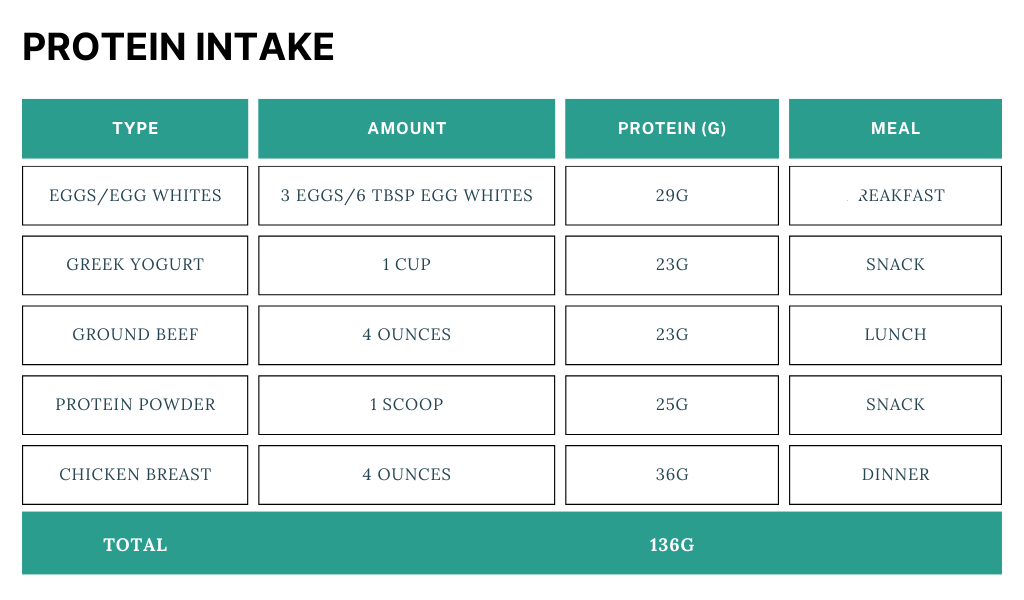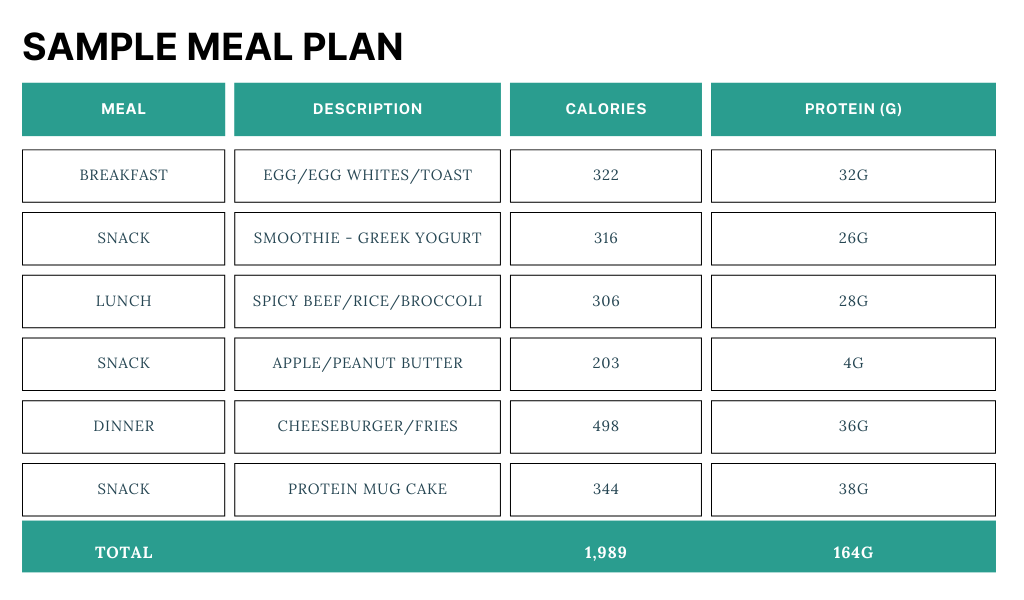The Best Diet for Fat Loss

So you’re ready to work towards a healthier, leaner you. For many men starting on the path of weight loss, the sheer volume of information available can be overwhelming—and often conflicting.
From fad diets that promise rapid fat loss to complicated meal plans that are difficult to follow, it’s easy to get lost in a sea of myths and marketing gimmicks. Our goal is to cut through the BS and provide you with straightforward, scientifically-backed advice that works.
This post is designed to explain the process of losing weight in simple terms, helping you understand what truly matters when it comes to fat loss.
Whether you’re just starting out or looking to refine your approach, keep reading as we explore effective strategies that prioritize your health and well-being.
Debunking Fad Diets
Let’s get fads diets out of the way first so you don’t waste any more time on them than you have to.
What is a fad diet? It’s a temporary diet trend that promises big results without scientific backing. They usually come with strict, and sometimes odd, rules to follow.
Fads diets rope us in because the promise big results in a short timeframe. Some popular fads are keto, atkins, detox diets, and even juice cleanses.
While there is infinite evidence that these diets work as claimed, there are many downsides to these approaches.
The biggest issue I have with these diets is that they don’t actually teach you anything useful. Losing 30lbs in a month doing keto sounds great, but what happens after that? I doubt anyone who cuts carbs ever does so with the intention of doing it for life.
When people get a good result and wrap up their fad diet, the only thing they are left with is their old ways. They go back to their previous lifestyle and gain all of their weight back. Sometimes they gain more back because they’ve made such a huge sacrifice that they spiral out of control the second they allow themselves to eat a slice of bread.
All in all, fad diets just aren’t sustainable. They’re designed to be temporary. A successful weight-loss story isn’t built around temporary change.
On another note, health risks don’t usually come up when thinking about fad diets. In some cases, a person’s weight can be more serious than any risks that come with a fad diet.
However, some diets can cause your death if not done properly or taken too far. Keto is one such diet. Please be careful and understand what you’re getting into with some of these diets.
More often than not, people who go on fad diets gain their weight back and find themselves on a diet cycle that never really ends. I was on this cycle for a while and it gets tiresome.
If you’re like me and dread the thought of another round of keto, or whatever diet you’ve tried, then you’re in the right place. Let’s get into what we really need to know.
Understanding Fat Loss
When you’re ready to commit to a weight-loss journey, what you really want to focus on is losing fat. It seems like an obvious thing to state, but many approaches to weight loss that people take also lead them to lose muscle. We don’t want that.
In order to lose weight, in general, you have to find your way to a caloric deficit. This means you’re burning more calories than you consume. Contrary to most people’s beliefs, this does not mean you need to start an exercise routine.
The reality is that most of the calories you burn in a day have little to do with your activity level. This isn’t to say you shouldn’t get some exercise, but it does not have as much of an impact on your weight loss as you might think.
Calorie deficits are also how fad diets work. They get you into a calorie deficit removing whole food groups from your diet. Cutting carbohydrates does not cause you to lose weight. The calories you cut because of cutting carbohydrates is what causes you to lose weight. Carbs are not the enemy!
Setting aside the soapbox, the most important thing you can do to lose weight is work on your diet and ensure you’re in a calorie deficit. Anything else, like exercise, is secondary to that.
Now that we understand that the only way to lose weight is to get into a calorie deficit, the next important thing is understanding macronutrients.
Macronutrients are protein, carbohydrates, and fat. The one we are most concerned with is protein. Remember, we want to lose fat, not muscle. Protein is what ensures we keep, maybe even grow, our muscle.
Aside from ensuring you are in a calorie deficit, you want to ensure you’re getting enough protein. Why protein??
Protein is what your body uses to maintain and repair itself. Without protein, you can still lose weight, but you might find yourself going from looking unhealthy fat to unhealthy skinny. We don’t need to look like Arnold Schwarzeneggar, but we also don’t want to look like Steve Urkel, either.
Also, when you eat protein, your body feels fuller and has to work harder to digest it than carbs or fats. This means that you burn more calories eating protein.
But how much protein is enough??
The answers on the internet vary widely. Some say 1 gram for every pound of body weight, others go for 0.7 grams for every pound of lean mass. The former doesn’t compute well for anyone weighing more than 225 pounds as 225 grams of protein in a day is a ton of protein. The latter is difficult for someone starting out to calculate. What’s your lean mass??
Here’s a simpler way to ensure you’re covered. Take 85 percent of your height in centimeters and that becomes your daily protein target.
Example for a guy who is 6 feet tall: 6 feet converted to centimeters is about 183cm. Multiply this by 0.85 and you get 156 grams of protein.
When it comes to carbs and fats, don’t worry too much. Just fill the remainder of your calories with them and carry on.
I’m sure you’re also wondering about getting into a calorie deficit and how to do that. Next, we’ll pull this altogether and give you examples of what a day of eating might look like in real life.
If you’re just starting your weight loss journey and want to save time and skip the learning curve, grab a free meal plan here to get you started!
Components of an Effective Fat Loss Diet
It’s important to note that our approach here is not designed to lose weight the fastest. Remember the Tortoise and the Hare? What we want is something sustainable, something that won’t leave us starving, but will give us wiggle room to enjoy some of our favorite foods.
This is important because those that lose weight sustainably tend to keep their weight off because they’ve actually made permanent adjustments to their lifestyle. While no weight loss journey is easy, going this route will allow you to enjoy foods and drinks that you never intended to give up for life. In doing so, you’re more likely to stay the course for longer, which means you’re more likely to lose the weight and keep it off.
Ok, back to it: In order to create a sustainable fat loss, we need to figure out what a modest calorie deficit is for our unique situation.
What we need to figure out first is an estimate of our Total Daily Energy Expenditure (TDEE). This number gives you an estimate of your daily calorie burn based on the factors you provide (height, weight, age, activity level, etc).
Once you have an estimate of your TDEE, you can subtract calories to create your target for a sustained calorie deficit. To see consistent, sustainable weight loss, you should subtract no fewer than 300 calories. In order to ensure you aren’t starving yourself, you should subtract no more than 500 calories.
[Calculate your TDEE for free here!]
Keep in mind that these numbers are estimates. You may need to adjust your actual calorie intake if you find yourself too hungry or not losing any weight. Progress won’t be lightning fast, but it should be noticeable week over week.
At this point, you have your calories target and you know how much protein you should consume. Again, you can’t lose weight without a sustained calorie deficit and eating plenty of protein will ensure you lose fat and not muscle. It will also help you feel fuller for longer and burn a few extra calories as it requires the most work to digest.
Two other factors to keep in mind are water intake and fiber. Water is really important whether you’re trying to lose weight or not, but during a weight-loss journey, water will help you feel fuller and it can help reduce hunger pangs that you’ll feel.
Fiber also helps you feel fuller, but it also helps keep things moving. If you follow the advice given here, you shouldn’t have to worry about tracking fiber intake. Just know that it’s helpful in the process.
Up next we’ll get into strategies for planning and eating at a caloric deficit.

Practical Eating Strategies for Fat Loss
This is where the rubber meets the road. We know our numbers, but now we need to know how to hit them. Until you’ve got your own strategy dialed in, you’ll need to start with two key activities: meal planning and tracking calories.
I can’t think of anyone who would tell you that these two activities are fun. They require some upfront work, but if you follow through, your journey will be way easier and you’ll be more likely to succeed. When you have a plan you tend to stick to it. On the other hand, if you try to wing this, you’ll probably fail in every way possible.
So, do the planning and the tracking.
On the positive side, once you get things dialed in, you can ease out of it a bit. But we’ll get to that later.
I talk about meal planning in the How to Meal Plan for Weight Loss post, so I won’t rehash everything here.
You don’t want to complicate things by having a unique breakfast, lunch, dinner, and snack every single day. The planning and tracking would be insane. Instant failure.
What we want to do is keep this as simple as possible. We do this by eating the same things consistently for most, if not all, of our meals. I keep my breakfast and snacks consistent every day. I mix up my dinner with the family and tend to have leftovers for lunch the next day.
This way, I’m really only planning for one meal a day. Not bad at all.
Start with Protein
Start by planning out your protein. Pick proteins you know you’ll eat. If you don’t eat salmon normally, don’t try adding it because it’s supposed to be good for you. Again, instant failure.
I hit my protein target with eggs, beef, chicken, greek yogurt, and protein powder. Occasionally, I use canned tuna. I don’t try to choke down foods I don’t like regardless of their health benefits.
As an example, the bulk of my protein intake might look like this for a day:

This gets me close to my protein target. I fill the gap with other foods that have less protein like peanut butter, milk, and even some of the carbs I eat. Worst case, you can add an ounce or two of beef or chicken to cover a gap.
Fill in with Fats & Carbs
Once you have your protein laid out, fill the rest of your calories with fats and carbs. Don’t stress too much about tracking oils and butter used in cooking. Just try to use cooking spray and have a light touch when using oils.
Other than that, experiment and see what works for you. As long as you hit your protein and calorie targets, you can do what you want…within reason.
Bread, rice, potatoes, and even pasta are all fair game. You just need to know how much you can eat and keep yourself in check.
Do yourself a favor and add vegetables. You’ll find it’s easy to skip over them when focusing on protein, fats, and carbs. But you won’t do well in the long run if you’re skipping veggies.
Here’s a sample of what this might look like if you were targeting 2,000 calories:

Not all of the detail is there, but you can see what a day of eating might look like. I hope you’re looking at this table thinking, “I can do this!”
My current calorie target is lower than 2,000 calories, but this is pretty close to what I eat most days. I have a sweet tooth and that mug cake keeps me in check.
There are many different ways to build a meal plan and this is just one. You might like fewer, but larger meals or maybe you prefer more chicken. Adjust to what works for you. It may take some trial and error, but that’s okay.
I also want to note the importance of occasional indulgences to prevent burnout. At least one night per week you should enjoy something you love. It could be a couple of drinks, dessert, or your favorite meal.
This will give you something to look forward to each week and help you hold off on grabbing something you don’t need. Knowing you can still enjoy your favorite foods while losing weight will help you stay the course longer.
Beyond Diet: Other Important Factors
What we’ve gone over so far is the foundation of the LeanLife Framework. If you don’t get your diet right, nothing else really matters. If your goal is to lose weight, you have to eat your way there.
With that said, though, exercise still has a role. Exercise doesn’t mean you have to join a fitness program or do videos like P90X. If you enjoy those things, go for it, but getting exercise is as simple as going for walks. It’s important enough to be the second part of the LeanLife Framework: Movement.
I target ten thousand steps a day, but getting eight to ten thousand steps consistently is good enough. Besides burning some extra calories and supporting your metabolism, walking has many benefits.
Walking is a low-impact activity compared with running or other more physical activities. It also helps regulate blood sugar levels and can boost your mood. The extra activity might help you sleep better, too.
If you’re not sleeping well, you should seek solutions to help you. A good night’s rest is critical to many things. You will have a harder time losing weight if you’re not getting proper sleep. On the flip side, poor sleep could be one of the factors that’s making you heavy.
Making the harder and healthier choices is much easier when you’re well rested. Doing anything from a state of exhaustion is a likely path to failure.
If you focus on moving more and getting good sleep, you should see results on your weight loss journey without feeling overwhelmed.
Conclusion
The best diet for fat loss isn’t a fad diet. It’s not a diet that requires you to sacrifice everything you love. It’s a diet that gives you flexibility, makes steady progress, and that you can sustain for a long time.
To find long-term success you will need to learn and understand the basics on calories and macronutrients and how they impact your weight. You only need to track two things to find success: calories and protein.
If you’re consistently in a calorie deficit and eating enough protein, you’ll lose fat. You will find that being consistent is easier if you keep your diet simple, stick to a plan, and allow yourself some wiggle room to enjoy your favorite foods.
Think long-term and keep your goals in mind. Weight loss is not a race, but a marathon. You don’t receive any benefit for going faster.
At the end of the day, find what works for you and stick with it. Start small if you have to and continue making good choices until you see the results you want!
